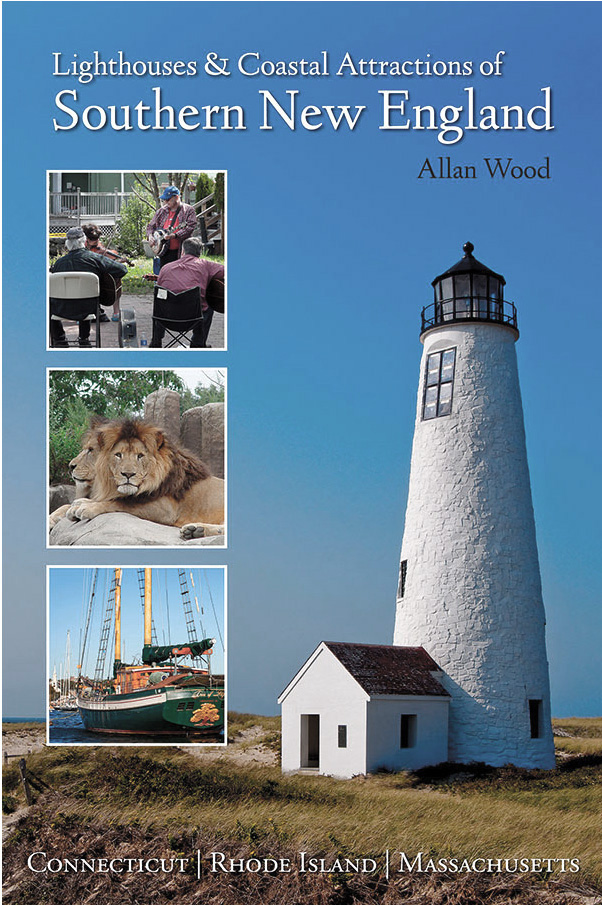Palmer Island Lighthouse
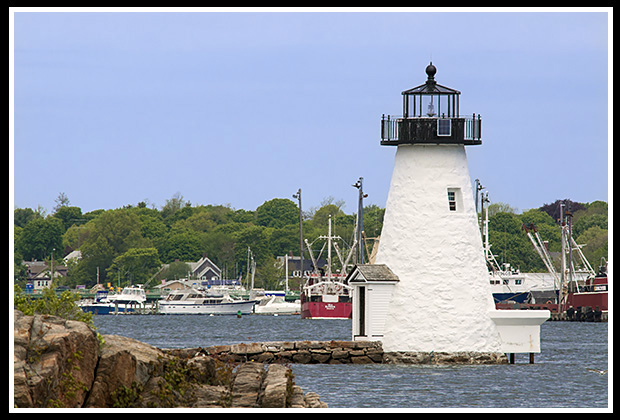
New Bedford, Massachusetts
Built in 1849
Location:
West side entrance to New Bedford Harbor.
Latitude: 41° 37' 36" N
Longitude: 70° 54' 36" W
Historic Stories:
New Bedford was the nation’s whaling capital up to the mid-19th century. In 1838, Frederick Douglass, the runaway slave who became a famous abolitionist settled in New Bedford. Herman Melville, who worked in New Bedford as a whaler, wrote the novel Moby Dick and published it in 1851 where the city became the initial setting of the book.
With the six-acre Palmer Island perched outward along the west side entrance to New Bedford's harbor, and with the increasing shipping and whaling traffic, the need for a lighthouse was petitioned.
| Palmer Island light was constructed in 1849, to safely guide traffic around the island. | 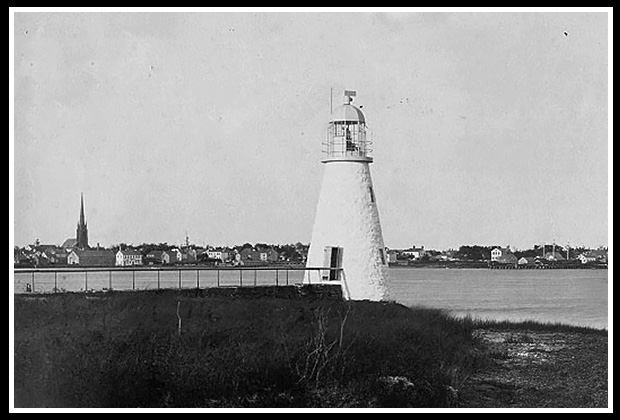
Early Palmer Island Light |
From the 1860s to 1890 a hotel and dance hall were built on Palmer Island and became a favorite stop not only for visitors, but also for returning whalers who became involved in much illegal activity.
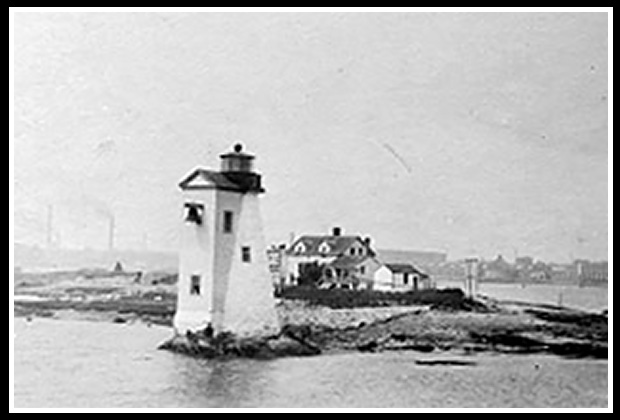
Early Reconstruction Palmer Island Light |
The problems that ensued caused the eventual closing of the hotel. |
It later became an industrial center for textiles in the 19th and 20th centuries.
During the September 1938 hurricane, all but Palmer Island Lighthouse tower and the oil house were destroyed. Mabel Small, Keeper Arthur Small’s wife, died of injuries during the hurricane while trying to save her husband, who was swept away from the lighthouse in the tidal surge. The keeper made it back to shore and was later rescued, he survived his injuries.
For more details about the Hurricane of 1938 and Authur Small's loss, select the link "Keeper Loses Wife" Blog at the top of the page to be directed to my section of Lighthouse Stories.
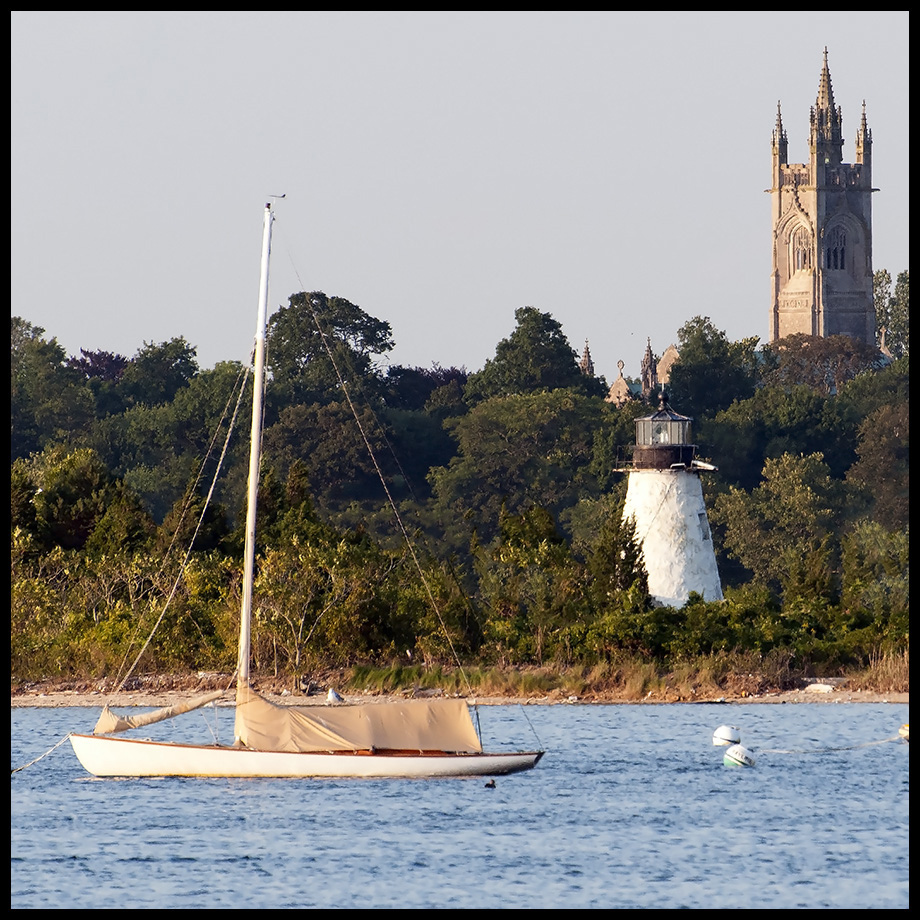
Places to Visit:
New Bedford’s history involves its rising status as one of the world’s main whaling ports.
| New Bedford still is a busy fishing port. | 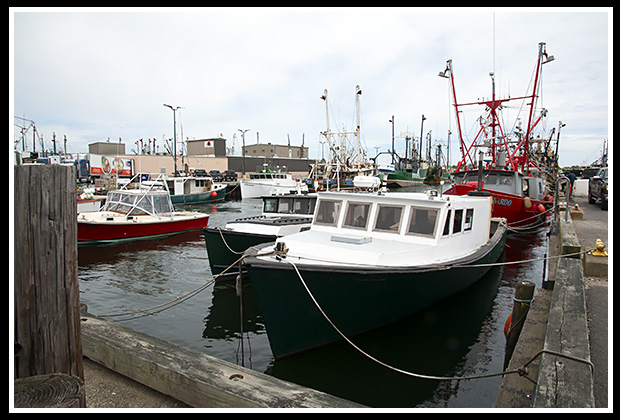 |
Nearby, visitors will find the New Bedford Whaling National Historic Park with its cobblestone streets, specialty shops, and museums
New Bedford’s Whaling Museum displays maritime exhibits and historical artifacts from its hay day in the 19th century, as the nation’s whaling capital. Palmer Island light can be seen from the museum.
Rotch-Jones-Duff Garden Museum showcases three elegant homes from merchants of the whaling area, with a full city block of special gardens. Other museums include the New Bedford Fire Museum to see fire trucks from the 1800s, and the New Bedford Museum of Glass for exploring the elegance of glass from around the world.
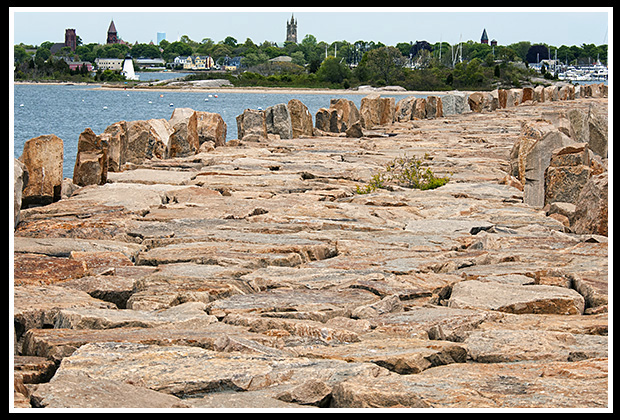 |
For those who enjoy hiking, take a good hike that spans over 9,000 feet on the largest hurricane barrier on the East Coast, protecting New Bedford Harbor. |
Palmer Island light is located at the end of the wall by New Bedford Harbor. For those that want to hike the entire wall, you can start from Fort Taber Park, by Clark's Point light, and hike out towards Palmer Island light and enjoy viewing three lighthouses along the way, Clark's Point, Butler Flats, and Palmer Island.
| Here, you can enjoy picnicking and view Clark's Point lighthouse on top of the fort, and Butler Flats light out in the water. | 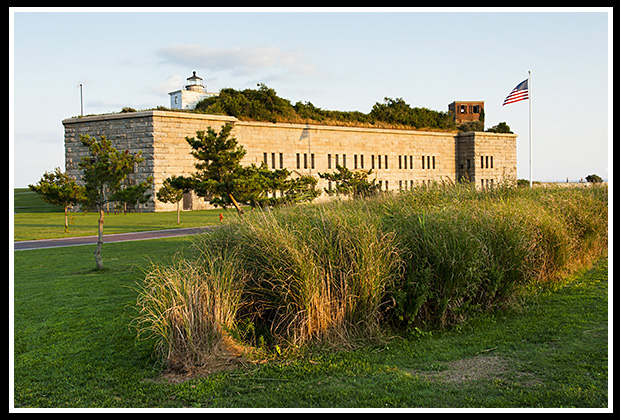 |
Fort Taber (or sometimes referred as Fort Rodham) has been restored as a recreational park to enjoy views of the harbor and lighthouse.
Visit the restored 156-foot Schooner Ernestina built in 1864, which is the official vessel of the Commonwealth of Massachusetts located in New Bedford on the State Pier. It sailed to within 600 miles of the North Pole, and helped in providing safe sailing for immigrants to America.
The Cuttyhunk Ferry that departs from New Bedford goes past the lighthouse. The tour boat from New Bedford Harbor Tours passes by the lighthouse in its harbor tour. Seastreak provides tours to Martha’s Vineyard from New Bedford and passes by the lighthouse.
Directions:
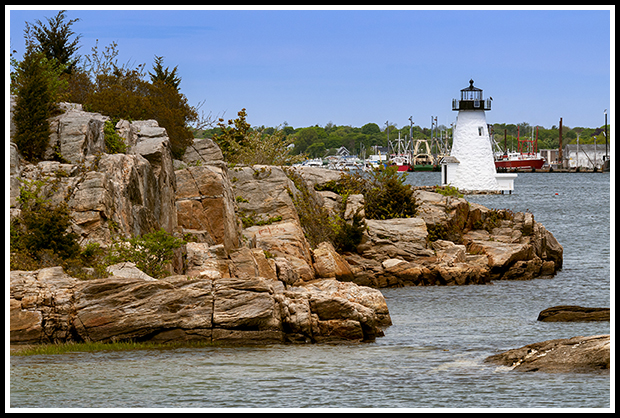
- From I-95 N in New Bedford, take Exit 15 and follow Route 18 South.
- Take the “Downtown” exit onto Water Street.
- Take a left at Union Street (one way) and cross over Route 1 (Kennedy Highway)
- Take a right at Frontage Road (Front Street).
- When Frontage veers to the right, turn left onto Twins Pier.
Alternate Directions:
- The lighthouse is accessible at low tide from the hurricane dike or by private boat.
- To reach the wall, take Route 18 south in New Bedford and turn left onto Cove Street.
- Make a quick left onto Morton Ct. then right at Gifford Street which will take you behind some industrial buildings,
- There you can park and access the hurricane wall. During low tide you can get close to the lighthouse from New Bedford's hurricane wall.
Contact Info:
City of New Bedford
133 William Street
New Bedford, MA 02740
Harbor Tours and Local Ferries
The following boats pass by Palmer Island Light as they leave and enter New Bedford Harbor, and there is a New Bedford Harbor cruise that passes by the lighthouse.
New Bedford Harbor Tours
Offers narrated cruises around New Bedford Harbor and past Palmer Island Light. Also offers a 2-hour sunset tour.
52 Fisherman’s Wharf, Pier 3,
New Bedford, MA 02740
Phone: (508) 951-0645
Email: info@newbedfordharbortours.com
Seastreak
Ferry from New Bedford to Martha’s Vineyard
49 State Pier
New Bedford, MA 02740
Phone: (866) 683 3779
Books to Explore
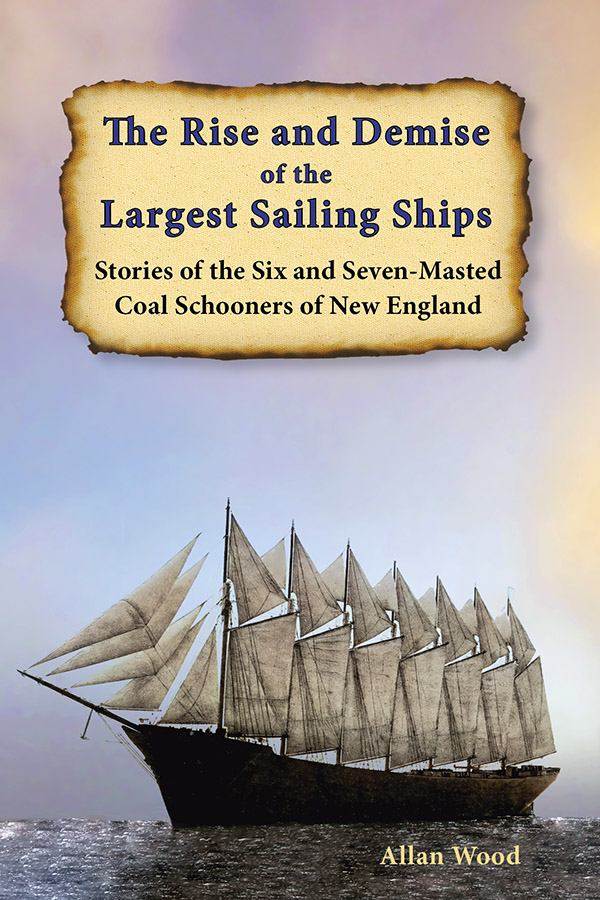
To order a signed paperback copy: Available also from bookstores in paperback, hardcover, and as an eBook for all devices. |
The Rise and Demise of the Largest Sailing Ships: In the early 1900s, New England shipbuilders constructed the world’s largest sailing ships amid social and political reforms. These giants of sail were the ten original six-masted coal schooners and one colossal seven-masted vessel, built to carry massive quantities of coal and building supplies, and measured longer than a football field! This book, balanced with plenty of color and vintage images, showcases the historical accounts that followed these mighty ships involving competitions, accidents, battling destructive storms, acts of heroism, and their final voyages. |
Lighthouses and Coastal Attractions of Southern New England: Connecticut, Rhode Island, and Massachusetts, provides special human interest stories from each of the 92 lighthouses of these densly populated states, along with plenty of indoor and outdoor coastal attractions and tours you can explore. More local details are provided in the tragedies and rescues during the Hurricane of 1938 Look inside! |
|

